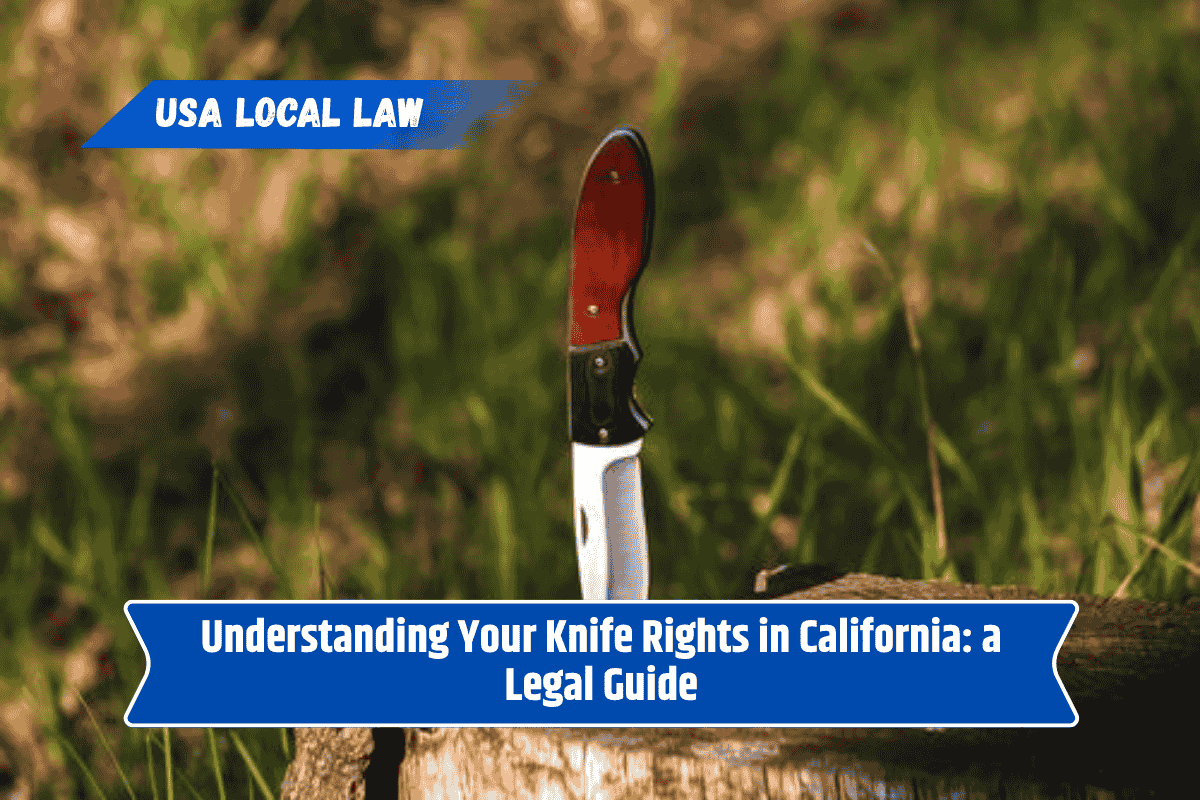Knives are useful tools, but in California, owning and carrying them is subject to specific legal rules. It’s important for residents and visitors to understand their rights and obligations regarding knives to avoid legal trouble.
California has unique laws on what types of knives are legal to own, how they can be carried, and where they can be carried. In this guide, we’ll break down the most important points to keep in mind regarding knife ownership and usage in California.
What Types of Knives Are Legal in California?
California law allows the ownership of many types of knives, but the key is how they are used and carried. In general, most knives like pocket knives and fixed-blade knives are legal to own.
However, some knives have restrictions based on their design and how they function. These knives are often classified as “switchblades,” “daggers,” or “dirks.” Let’s look at some of the most common knives and their legal status:
Pocket Knives
Pocket knives, which are small folding knives, are widely accepted in California. They are considered legal to carry, provided the blade is not longer than 2.5 inches in length. These knives are commonly used for everyday tasks and are generally not a concern in terms of legality.
Switchblades
Switchblade knives are knives that open automatically with the push of a button. In California, it is illegal to carry a switchblade knife with a blade longer than 2 inches. However, owning one is not illegal as long as it stays within the legal guidelines. Carrying one concealed, however, can lead to criminal charges.
Butterfly Knives
Also known as balisongs, butterfly knives are legal to own in California. However, they are illegal to carry concealed. If the blade is exposed or ready to be used, it could lead to legal problems if you’re caught carrying it in public without a lawful reason.
Fixed-Blade Knives
Fixed-blade knives, such as hunting knives or survival knives, are legal to own in California. However, carrying them in public may be restricted. They must be openly carried, meaning they can’t be hidden or concealed on your body.
Legal Restrictions on Carrying Knives
Carrying knives in California is more complicated than simply owning them. Different laws apply based on where and how you are carrying a knife. Let’s break down the rules for carrying knives:
Open Carry vs. Concealed Carry
One of the main distinctions in California knife laws is between open carry and concealed carry. Open carry means the knife is visible, like being worn on a belt or placed on a backpack. Concealed carry means the knife is hidden from view, such as being in your pocket or under your clothes.
Open Carry: In most cases, you can openly carry a legal knife. However, if the blade is larger than 4 inches, it may be illegal to carry it openly in some areas, particularly in cities and counties with stricter local ordinances.
Concealed Carry: Concealed carry of knives is generally prohibited, especially if the knife is a switchblade, dirk, or dagger. There are exceptions, such as if you’re carrying the knife for lawful purposes like work or hunting, but even then, certain rules apply.
Carrying Knives on School Grounds
Carrying knives on school grounds, even if they are legal to own, is illegal in California. The law is strict, and penalties can include criminal charges. If you’re caught with a knife on school grounds, it could lead to serious legal consequences, including suspension or expulsion if you’re a student.
Local Restrictions
While California has state laws, many cities and counties have their own restrictions on knives. In some places, you may face additional rules that limit how long the blade can be or whether certain types of knives can be carried at all. It’s important to be aware of these local laws before carrying knives in public spaces.
Penalties for Violating Knife Laws
If you violate California’s knife laws, the penalties can range from minor fines to serious criminal charges. Some of the most common penalties include:
Fines: Minor offenses, such as carrying a concealed knife, may result in fines.
Misdemeanor Charges: Carrying a banned knife, like a switchblade with a blade longer than 2 inches, may lead to misdemeanor charges, which carry potential jail time.
Felony Charges: In extreme cases, such as carrying knives with the intent to commit a crime, you may face felony charges.
Understanding your rights and restrictions regarding knives in California is crucial. Whether you are a resident or just visiting, it’s important to be aware of the types of knives that are legal to own, how they can be carried, and the specific laws that apply to your area.
Make sure to follow the state’s regulations to avoid legal issues. While knives are useful tools, how and where you carry them can make a big difference in terms of the law.
It’s always a good idea to check with local authorities if you’re unsure about any particular rules in your area, as local laws can be stricter than state laws. Staying informed will help you avoid unnecessary legal trouble and ensure that you can legally and safely use your knives.
